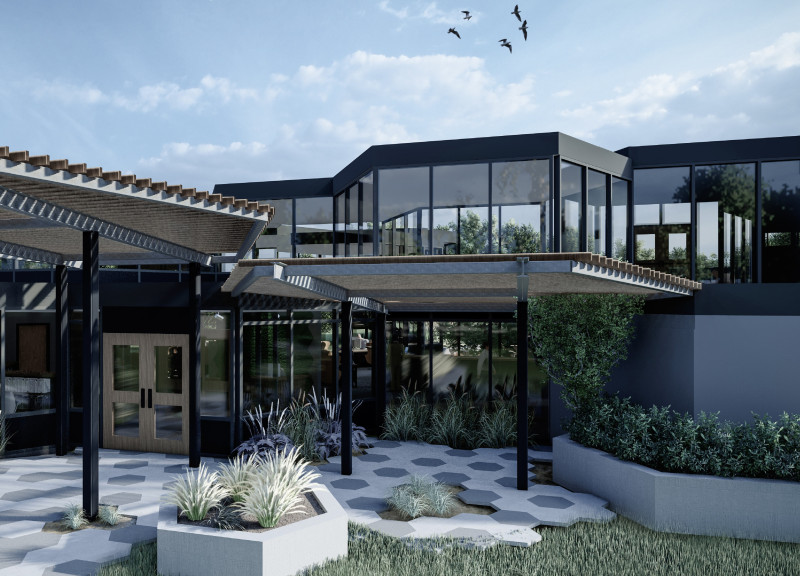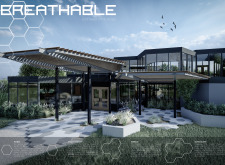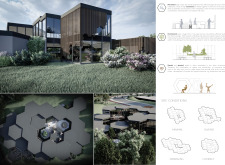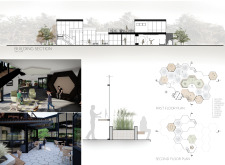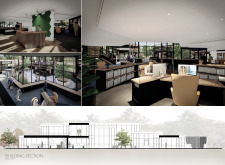5 key facts about this project
At its core, the architecture embodies a commitment to creating spaces that foster interaction and connectivity. The primary function of the project is to serve as a multi-use community center, providing a venue for various activities such as workshops, exhibitions, and gatherings. This focus on multi-functionality is evident in the design, which features flexible spaces that can be adapted for diverse events. The layout encourages users to flow seamlessly from one area to another, enhancing the social dynamics among visitors.
Materials play a pivotal role in the overall design, contributing not only to the aesthetic quality but also to the sustainability of the structure. The project utilizes an array of materials, including locally sourced timber, recycled concrete, and glass. Timber lends warmth and a sense of connection to nature, while the use of recycled concrete highlights a commitment to sustainability and reducing carbon footprints. Large expanses of glass strategically incorporated throughout the design invite natural light into the interior spaces, promoting a vibrant atmosphere while minimizing the reliance on artificial lighting.
The architectural design is characterized by its integration with the site, thoughtfully responding to the topology and existing vegetation. The building's form adapts to the contours of the land, creating a harmonious relationship with the natural environment. This approach not only enhances the visual appeal but also reinforces the project's intent to promote ecological awareness among its users.
Unique design elements are present throughout the project, providing it with a distinctive character. For instance, an innovative green roof system supports local biodiversity while also serving as an additional recreational space for community members. The roof's design allows for stormwater retention, which helps mitigate flooding in the area, exemplifying a proactive approach to environmental challenges.
Furthermore, the project incorporates features such as outdoor terraces and landscaped areas, allowing users to engage with their surroundings actively. These spaces provide opportunities for social interaction and relaxation, combining functionality with the enjoyment of nature. The landscape design is intentionally curated to reflect the local ecosystem, promoting biodiversity and complementing the architectural form.
The overall aesthetic is a balance of modernity and tranquility, achieved through a thoughtful selection of colors and textures. Earthy tones dominate the exterior, evoking a sense of stability and grounding, while the interior spaces showcase lighter hues that emphasize openness and airiness. This careful consideration of color palette enhances the user experience, creating an inviting atmosphere conducive to community engagement.
As viewers explore the project presentation, they are encouraged to delve into the architectural plans that illustrate the careful planning behind each functional area. Detailed architectural sections reveal the spatial relationships and structural considerations that inform the design's integrity. Engaging with the architectural designs not only provides a deeper understanding of the project but also showcases innovative architectural ideas that prioritize sustainability and user interaction.
This architectural endeavor represents a significant contribution to its urban context, offering a prototype for future community-focused designs. By emphasizing adaptability, environmental responsibility, and social connectivity, the project manifests a vision for how architecture can cater to the complexities of modern living. Interested readers are invited to explore the presentation further to gain comprehensive insights into the project’s architectural nuances and its thoughtful design journey.


